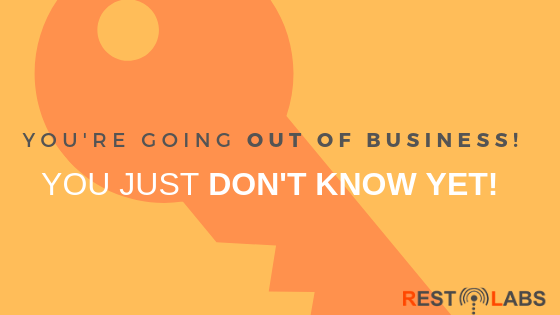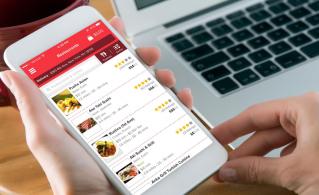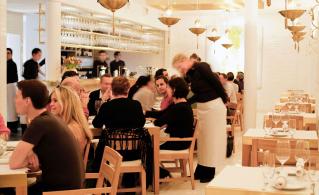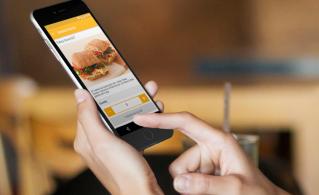Key Takeaways
- Food delivery apps can severely damage restaurant profits by charging commission fees between 12-35% per order, which dramatically reduces earnings when most restaurants already operate on thin profit margins of 50% or less.
- Restaurants lose control over their customer relationships when using third-party platforms, as these apps retain all customer data and prevent direct marketing opportunities that could build long-term loyalty.
- The promised exposure from delivery platforms often comes with hidden costs, requiring restaurants to pay extra fees for visibility while customers typically focus on deals rather than building brand loyalty.
- Building your own online ordering system allows restaurants to keep 100% of their revenue, own customer data for marketing purposes, and maintain control over the entire customer experience without paying ongoing commissions.
The Illusion of Growth: Are Food Delivery Apps Helping or Hurting?
Food delivery platforms promise restaurant owners increased reach, more customers, and higher revenue. Their aggressive marketing and persuasive pitches paint a picture of exponential business growth. But when you break down the numbers, you might realize that these platforms are actually eating into your profits rather than expanding them.
Many restaurant owners initially saw their delivery orders increase, but with time, they noticed that their overhead expenses were also rising. The question is: Are food delivery apps truly beneficial, or are they slowly suffocating your business?
Let’s Do the Math: Hidden Costs of Food Delivery Platforms
Take a look at the actual financial burden imposed by third-party food delivery apps:
- Commission Fees: Delivery apps charge commission rates ranging from 12% to 35% per order. Platforms like Zomato charge between 12%-20%, while UberEats can take up to 35% plus additional fees.
- Slim Profit Margins: Most restaurants operate on a profit margin of around 50% or less. If you're paying 20-30% per order in commissions, this significantly reduces your earnings.
- Customer Ownership: Even though customers place orders through these platforms, you don’t own their data. The delivery app retains the customer information, limiting your ability to market directly to them in the future.
Over time, rather than expanding your revenue, food delivery platforms replace your core business model, shifting it from in-house dining to commission-heavy delivery orders.
The False Promise of Exposure
Delivery platforms argue that they help restaurants gain new customers, but here’s the reality:
- Pay-to-Play Visibility: Many food delivery apps offer premium placements for a fee, meaning only the highest-paying restaurants get prime visibility.
- Lack of Brand Loyalty: Customers using these platforms are often shopping for deals rather than specific restaurants, leading to low brand loyalty.
- No Control Over Customer Experience: Once your food leaves the kitchen, your brand experience is in the hands of the delivery app, affecting food quality, presentation, and delivery speed—yet your restaurant takes the blame for any mishaps.
A Better Alternative: Take Control of Your Online Ordering
Instead of losing profits to third-party apps, invest in a branded online ordering system tailored to your restaurant’s needs. Here’s how it can benefit you:
- Higher Profit Retention: Keep 100% of your revenue without commission deductions.
- Customer Data Ownership: Build your own database and retain direct customer relationships for remarketing efforts.
- Custom Promotions & Loyalty Programs: Offer discounts, deals, and loyalty rewards without paying extra to an external platform.
- Lower Marketing Costs: Rather than spending on food delivery app promotions, focus on organic marketing through social media, SEO, and direct customer engagement.
It’s Time to Change How You Do Business
While third-party food delivery apps may seem like an easy solution, they are often an expensive trap. Instead, take control of your restaurant’s future with a smart, user-friendly online ordering system like Restolabs.
With built-in customization, direct marketing tools, and seamless integration, you can increase revenue without sacrificing your profits to middlemen.If you’re already a Restolabs client, you know the advantages. If not, now is the time to switch and start maximizing your restaurant’s potential without third-party interference!
Restolabs takes a fresh approach to online ordering. We build customized online ordering system that lets you take unlimited orders through your website and application for a flat monthly rate.
The benefits of online ordering software don’t stop there. You also get unrestricted access to all your customers’ email addresses that will help you build customer loyalty through digital marketing campaigns.
To learn more about Restolabs, book a live demo with one of our online ordering specialists today!
Frequently Asked Questions
Food delivery apps charge commission rates ranging from 12% to 35% per order. For example, Zomato charges between 12%-20%, while UberEats can take up to 35% plus additional fees. With most restaurants operating on profit margins of 50% or less, these commissions significantly reduce your earnings
When customers order through delivery apps, the platform retains all customer information and contact details. This means you can't build your own customer database or market directly to these customers in the future, limiting your ability to create lasting relationships and repeat business.
Restolabs allows you to keep 100% of your revenue without commission deductions through a flat monthly rate model. You also get unrestricted access to all customer email addresses, enabling you to build loyalty through direct marketing campaigns and custom promotions without paying extra fees to external platforms.
Delivery apps use a pay-to-play visibility model where only restaurants paying premium fees get prime placement. Customers on these platforms often shop for deals rather than specific restaurants, leading to low brand loyalty. Additionally, you have no control over the delivery experience, yet your restaurant gets blamed for any mishaps.
Start by investing in a branded online ordering system like Restolabs that integrates with your website and offers customization options. Focus your marketing efforts on social media, SEO, and direct customer engagement rather than paying for delivery app promotions. This approach reduces marketing costs while building direct customer relationships.


.gif)








